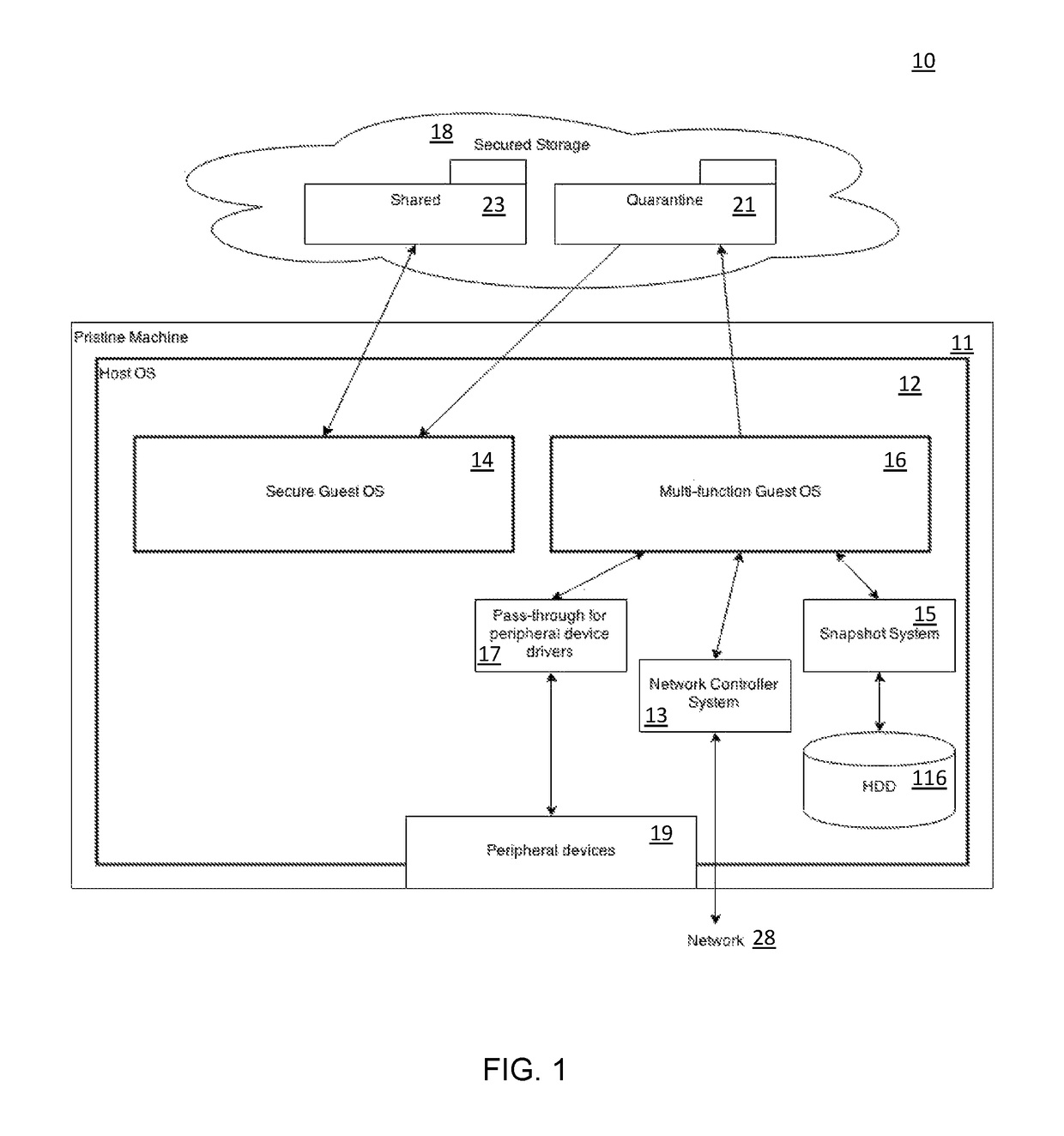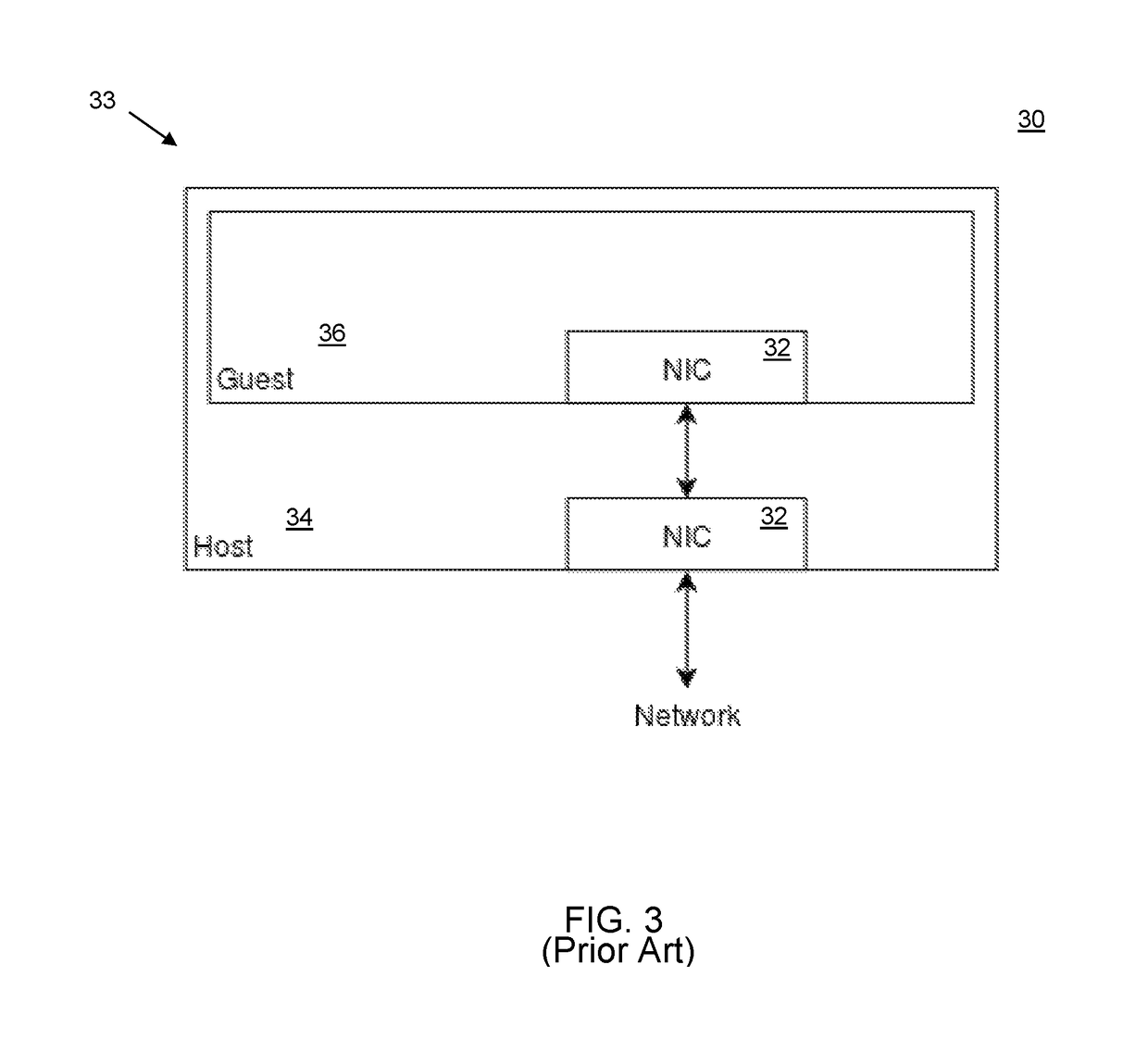Method to split data operational function among system layers
a data operation and system layer technology, applied in the field of computing, can solve the problems of data breach, ineffective antivirus software, additional central processing unit (cpu) overhead, etc., and achieve the effect of facilitating function splitting
- Summary
- Abstract
- Description
- Claims
- Application Information
AI Technical Summary
Benefits of technology
Problems solved by technology
Method used
Image
Examples
Embodiment Construction
[0042]The present invention has utility in performing operation on digital data, synonymously referred to herein as packets or data packets, through bifurcation of functions into two separate layers. Algorithms are split with only part being run in each layer space and the outcomes combined. In this way greater speed results and the user sees no differences relative to conventional unified function operation save for a marked increase in speed. The split can be determined by human selection of how to parse the function between the two environments or be done by machine, afterwards once the split has been made it can be optimized based on machine performance feedback (speed is normalized based on initial split, then part of algorithm is moved between layers and if speed goes up, keep it, else revert and try something else). If there are two conflicting vectors in the same function, those are automatically split to get maximal throughput. While the present invention is detailed with r...
PUM
 Login to View More
Login to View More Abstract
Description
Claims
Application Information
 Login to View More
Login to View More - R&D
- Intellectual Property
- Life Sciences
- Materials
- Tech Scout
- Unparalleled Data Quality
- Higher Quality Content
- 60% Fewer Hallucinations
Browse by: Latest US Patents, China's latest patents, Technical Efficacy Thesaurus, Application Domain, Technology Topic, Popular Technical Reports.
© 2025 PatSnap. All rights reserved.Legal|Privacy policy|Modern Slavery Act Transparency Statement|Sitemap|About US| Contact US: help@patsnap.com



